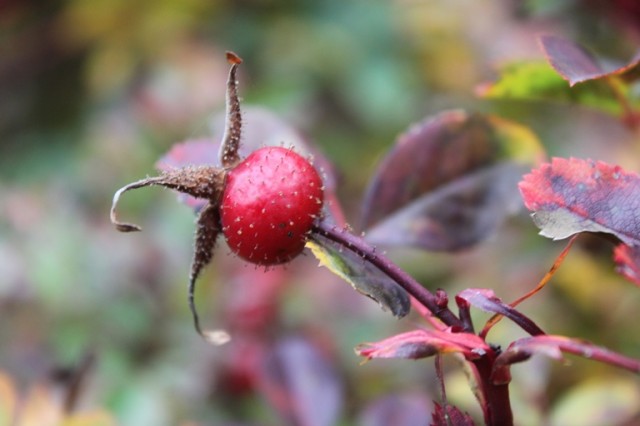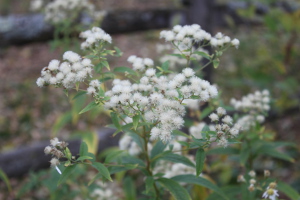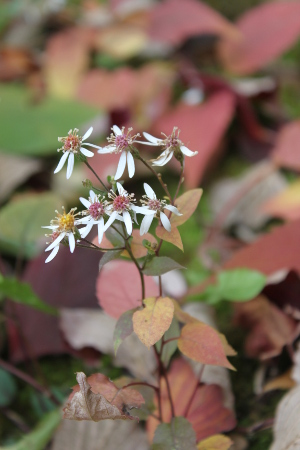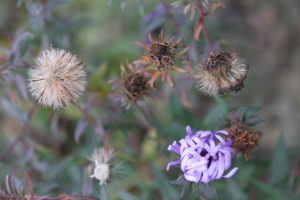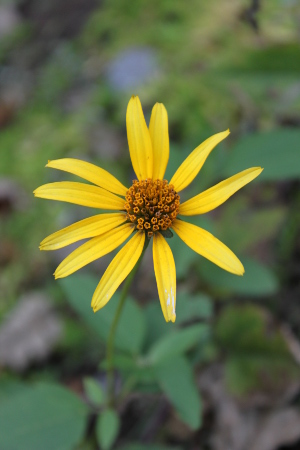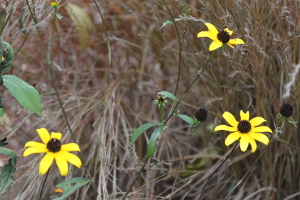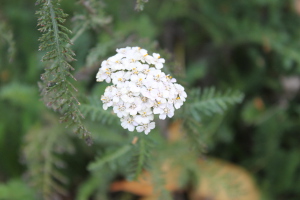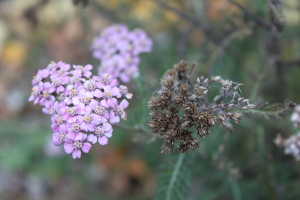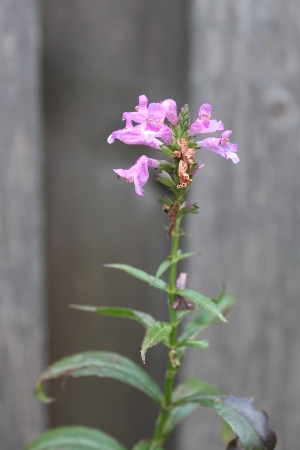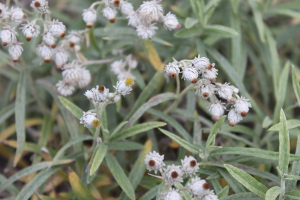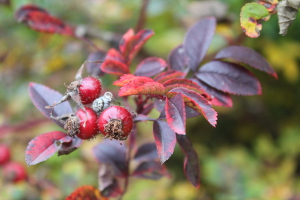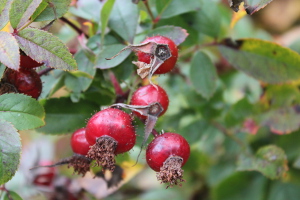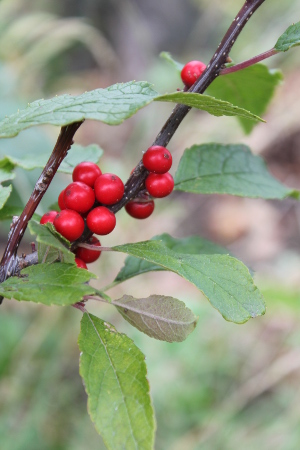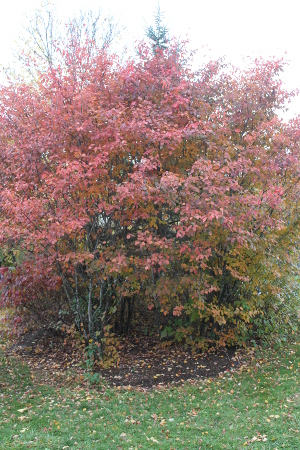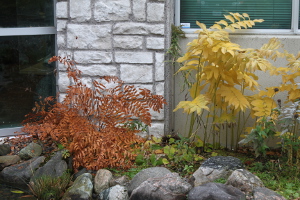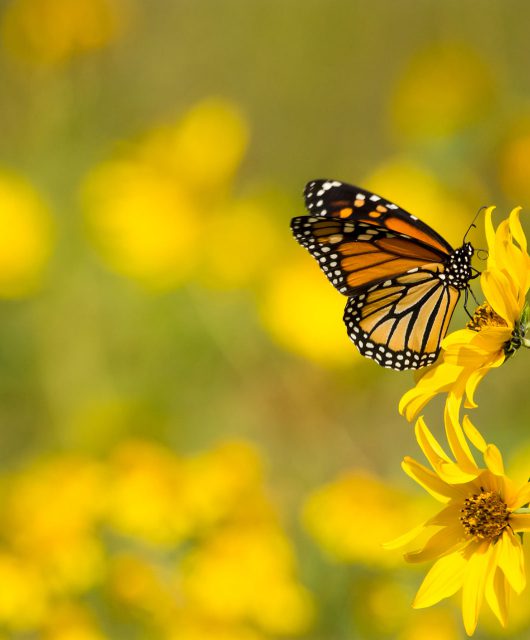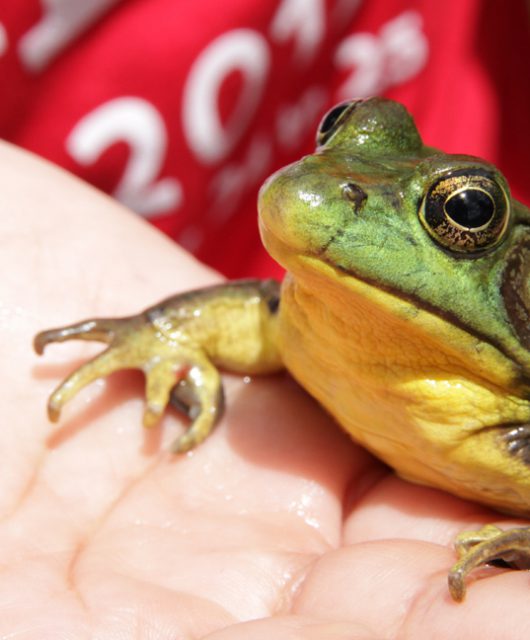The weekly reports on our Wildlife-friendly Demonstration Garden, here at CWF headquarters in Ottawa, have had a long break and will join the garden in going dormant for a while.
The leaves have slowly changed colour, berries have been eaten and petals were shed, leaving behind seed heads for hungry mouths this autumn, winter and maybe even early spring. We still have a few remaining blooms, however, despite the frosts that have visited us. Below are what I saw on my rounds this week :
Above, flat-topped white aster (Doellingeria umbellata – formerly Aster umbellatus) seed heads, with a few lingering flowers in the background.
White wood aster (Eurybia divaricata) still going strong!
New England aster (previously called Aster novae-angliae, now Symphyotrichum novae-angliae) only has a few blooms left.
False sunflower (Heliopsis helianthoides) has several flowers still.
A few Rudbeckia blooms add colour to the browns and greys of this bed.
Pink obedient plant is a later bloomer than the white ones, extending colour in the garden.
Pearly everlasting flowers bloom long on the plant, as well as last long as a dried cut flower.
Rosehips add colour with leaves and fruit.
A new addition to our garden this year, winterberry (Illex verticillata) has bright red berries that should stay plump for several months. They have male flowers on one plant and female on another, so if you get this plant and you want the bright berries, be sure to check for both sexes.
In addition to the bright reds of maples and yellows of beaked hazelnuts, serviceberries (above) show their own pretty colour as do…
Royal ferns (left) and this species of Solomon’s seal (right).
I hope you are enjoying the autumn splendours in your own garden or local park. If you are wondering what gardening jobs and wildlife help might be good to do at this time, check out our Gardening Calendar!

